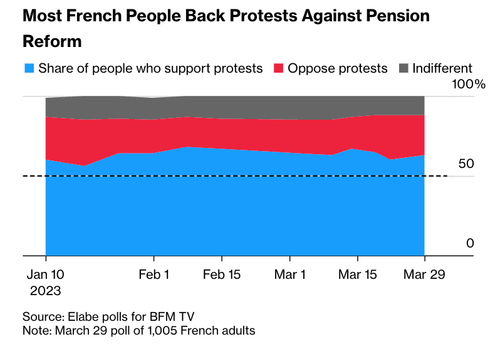Stuart Jeanne Bramhall's Blog: The Most Revolutionary Act , page 435
April 10, 2023
Beijing and Moscow Uniting Mideast Oil Countries – Sunni and Shia Muslims Making Peace

by Brian Shilhavy
Editor, Health Impact News
We are living in unprecedented times. I think it is safe to say that nobody alive today has ever seen such a massive realignment of countries in the Middle East coming together to put aside their differences and start working together to try and stop the endless wars, and work together for economic prosperity.
And the two countries that are spearheading the uniting of these Middle Eastern countries, are China and Russia.
This was a historic week of new meetings between countries in the Middle East, many of which have been bitter enemies with each other, sometimes for hundreds, if not thousands of years.
Here is a brief summary of these historical events that took place this past week:
Top Iranian, Saudi envoys meet in China in restoration of diplomatic tiesby Bernard Orr and Aziz El Yaakoubi ReutersExcerpts:
BEIJING/RIYADH (Reuters) – The foreign ministers of Iran and Saudi Arabia met in Beijing on Thursday for the first formal gathering of their top diplomats in more than seven years, after China brokered a deal to restore relations between the top regional powers.
After years of hostility that fuelled conflicts across the Middle East, Iran and Saudi Arabia agreed to end their diplomatic rift and reopen diplomatic missions in a significant deal facilitated by China last month.
In brief footage broadcast on Iranian state TV, Prince Faisal bin Farhan Al Saud and his Iranian counterpart, Hossein Amirabdollahian, greeted each other before sitting down side by side.
Saudi Arabia and Iran, the Gulf’s dominant Sunni Muslim and Shi’ite Muslim powers respectively, said in a joint statement they would launch arrangements to reopen embassies and consulates within the two-month period stipulated in the deal.
“The era of the United States’ involvement in this region is over … The regional countries are capable of preserving security and stability in the Middle East without Washington’s interference,” another Iranian official said. (Source.)
Moscow Hosts Meeting Aimed at Syria-Turkey Normalization by Dave DeCamp AntiWar.comThe deputy foreign ministers of Syria, Turkey, Iran, and Russia wrapped up two days of talks in Moscow on Tuesday that were aimed at working toward a normalization deal between Ankara and Damascus.
There’s no sign a breakthrough was made, but a follow-up meeting at the foreign minister level is expected to happen soon. A Turkish Foreign Ministry source told Russia’s TASS news agency that the four sides agreed to continue consultations and are planning to hold a foreign ministers meeting.
Russian Foreign Minister Sergey Lavrov said that Moscow had proposed dates for the meeting of the top diplomats from the four countries. The talks this week built on a meeting between Syria and Turkey’s defense ministers hosted by Russia in December 2022, marking the first time the two countries held talks at that level since 2011.
Read the full article at AntiWar.com.
Saudi, Omani delegations arrive in Yemen for talks with Houthi leaders ReutersSaudi and Omani delegations arrived in Yemen’s capital Sanaa, Houthi-run media said on Sunday, to negotiate a permanent ceasefire deal with Houthi officials.
The visit indicates progress in the Oman-mediated consultations between Riyadh and Sanaa, which run in parallel to UN peace efforts. Peace efforts have also gained momentum after Saudi Arabia and Iran agreed to reestablish ties in a deal brokered by China.
The envoys, who landed late on Saturday, will meet with the head of Houthi Supreme Political Council, Mahdi al-Mashat, to hold talks on ending hostilities, Houthi news agency SABA reported.
Sources have told Reuters that the Saudi-Houthi talks are focused on a full reopening of Houthi-controlled ports and Sanaa airport, payment of wages for public servants, rebuilding efforts and a timeline for foreign forces to exit the country.
A Houthi official said on Saturday the group had received 13 detainees released by Saudi Arabia in exchange for a Saudi detainee freed earlier, ahead of a wider prisoner exchange agreed by the warring sides.
At talks in Switzerland last month attended by the United Nations and the International Committee of the Red Cross, the Yemeni government and the Houthis agreed to free 887 detainees.
The 13 prisoners are part of that agreement, Houthi official Abdul Qader al-Mortada said.
Read the full article at Al Arabiya Network
Saudi delegation arrives in Iran to discuss diplomatic missions after historic deal in Beijing by Agence France-PresseA Saudi delegation arrived in Tehran on Saturday to discuss reopening its diplomatic missions in the Islamic republic, two days after a historic meeting in Beijing between their foreign ministers.
The visit follows the unprecedented meeting between their heads of diplomacy in China on Thursday after they agreed last month to restore diplomatic ties.
The Saudi diplomatic delegation arrived in Iran to discuss the reopening of its missions after a seven-year absence, Riyadh’s foreign ministry said.
Cited by the official Saudi Press Agency (SPA), the minister called the visit part of “implementing the tripartite agreement” reached on March 10 between the two regional powers, brokered by China, to restore ties ruptured in 2016.
The two long-time Middle East rivals have now pledged to work together.
When Saudi Foreign Minister Prince Faisal bin Farhan and his Iranian counterpart Hossein Amir-Abdollahian met in Beijing on Thursday they vowed to bring security and stability to the turbulent Gulf region.
Read the full article at Agence France-Presse.
Iran appoints first UAE ambassador since 2016 as Gulf relations improveCAIRO, April 4 (Reuters) – Iran said on Tuesday it had appointed an ambassador to the United Arab Emirates for the first time since 2016, amid a realignment of relations between Gulf states and Iran.
The move comes after the UAE in August moved to upgrade ties and said it was returning its ambassador to Tehran.
The UAE downgraded relations with Iran after Saudi Arabia severed ties with Iran in January 2016 after Iranian protesters stormed the Saudi embassy in Tehran following Riyadh’s execution of a prominent Shi’ite cleric.
In a steep change to years of hostility between Iran and Saudi Arabia that had threatened stability and security in the Gulf and helped fuel conflicts in the Middle East from Yemen to Syria, Riyadh last month said it would re-establish relations with Tehran in a China-brokered deal.
The UAE, which has business and trade ties with Iran stretching back more than a century, started re-engaging with Tehran in 2019 after attacks in Gulf waters and on Saudi energy sites.
The UAE’s Dubai emirate has long being one of Iran’s main links to the outside world.
Iran’s newly appointed ambassador Reza Ameri had served as the director general of the Iranian expatriates office in the foreign ministry, Iranian state media said.
Read the full article at Reuters.
[…]
April 9, 2023
British Study: Alarming Risks of Suicide and Homicide in Transgender Individuals
 Jackson SS, Brown J, Pfeiffer RM, Shrewsbury D, O’Callaghan S, Berner AM, Gadalla SM, Shiels MS. Analysis of Mortality Among Transgender and Gender Diverse Adults in England. JAMA Netw Open. 2023 Jan 3;6(1):e2253687. doi: 10.1001/jamanetworkopen.2022.53687. PMID: 36716027; PMCID: PMC9887492.
Peter A. McCullough, MD, MPH
Jackson SS, Brown J, Pfeiffer RM, Shrewsbury D, O’Callaghan S, Berner AM, Gadalla SM, Shiels MS. Analysis of Mortality Among Transgender and Gender Diverse Adults in England. JAMA Netw Open. 2023 Jan 3;6(1):e2253687. doi: 10.1001/jamanetworkopen.2022.53687. PMID: 36716027; PMCID: PMC9887492.
Peter A. McCullough, MD, MPH
Many of us have been struck by the rapid rise in clinical interest and reported studies on transgender persons. The main clinical indication for gender change medication and or surgery is gender dysphoria. This means that individuals are afflicted with a syndrome in which they are not happy with their natural gender from birth. While changing biological gender the opposite is associated with a modest improvement in gender dysphoria scores, one may wonder if there is a price to pay for such a substantial and and relatively permanent intervention for a psychiatric illness?
Jackson et al, recently reported on the outcomes of total of 1951 British transfeminine (male at birth) (mean [SE] age, 36.90 [0.34] years; 1801 White [92.3%]) and 1364 transmasculine (female at birth) (mean [SE] age, 29.20 [0.36] years. The normal control group was matched to 68,165 cisgender men (59 136 White [86.8%]) and 68,004 cisgender women (57 762 White [84.9%]). Compared with cisgender men, there was an increased risk of overall mortality for transfeminine (MRR, 1.34; 95%CI, 1.06-1.68). Compared with cisgender women, there was an increased risk of overall mortality for transmasculine (MRR, 1.75; 95%CI, 1.08-2.83) adults.
The most notable relative risks for those who changed genders was suicide and homicide as shown in the table. These data suggest that psychiatric and behavioral determinants arising from background gender dysphoria and the transgender process contribute to death at a relatively young age among those who have chosen to change from their original biological gender to the opposite.
[…]
Via https://petermcculloughmd.substack.com/p/analysis-of-mortality-among-transgender
French Pension Protesters Storm Paris BlackRock Headquarters

Zero Hedge
Update (0810ET):
We noted early that pension protestors in France were gathered outside of BlackRock’s Paris headquarters. The protestors have now stormed the building.
Here are the current scenes from Paris:
BREAKING: BlackRock’s office in Paris.pic.twitter.com/TSmodRz9vY
— PiQ (@PriapusIQ) April 6, 2023
Happening in France this morning.
Railway workers have taken over BlackRock’s headquarters in Paris.pic.twitter.com/unwYeH1YS3
— Zineb Riboua (@zriboua) April 6, 2023
BREAKING NEWS: BlackRock Paris headquarters is NOW taken by France protestors
BlackRock is the world's largest asset manager, with US$10 trillion in assets under management as of January 2022.
The screnario is super chaos
pic.twitter.com/BCDHupcedk
— Coinwire.com (@coinwirehq) April 6, 2023
BREAKING:
$10 trillion asset manager BlackRock Paris headquarters taken over by protestors. pic.twitter.com/b77wYsJIkM pic.twitter.com/lKz5nM9vzf
— Multify Media (@multifymedia) April 6, 2023
France faces another wave of widespread protests and strikes following an unproductive discussion between the prime minister and labor unions. The failure to reach a compromise on the unpopular pension reform, which extends the working years for individuals, has fueled two-and-a-half months of public discontent.
Hundreds of thousands of people are expected to protest on Thursday against Emmanuel Macron’s pension reform to raise the minimum age from 62 to 64.
NOW – Protest at BlackRock head office in Paris.
The Globalists are starting to run into some bother as the world awakens from its slumber #paris #blackrock #biden #us #France #Dollar #protests pic.twitter.com/jBv93gtvbh
— jamiemcintyre (@jamiemcintyre21) April 6, 2023
Protests again grip France but Macron not backing down
https://t.co/ObUxxNENKm pic.twitter.com/GAiNzzTs8K
— Mohamed Vevo (@MoH_Vevo_Mv) April 6, 2023
Operation "Dead City"
Protesters block major highways, universities, high schools, industrial areas, etc., as protests against Macron's pension reforms continue in France.
This is Lyon, France.pic.twitter.com/0V521MQD7O
— Hassan Mafi (@thatdayin1992) April 6, 2023
France

Protests continue to take place across France against Macron's pension reform (and many other issues). Just look at the scale of the protests in Toulouse.pic.twitter.com/4j368gEe0D
— James Melville (@JamesMelville) April 6, 2023
Trade union leaders met the Prime Minister, Elisabeth Borne, on Wednesday, but after just an hour of talks — they failed to find a comprise. The Guardian provides insight into some of those conversations:
Cyril Chabanier, speaking on behalf of France’s eight main unions, said: “We again told the prime minister that the only democratic outcome would be the text’s withdrawal. The prime minister replied that she wished to maintain the text, a serious decision.”
Sophie Binet, the new leader of the CGT trade union, called for more protests and strikes after the failed talks with the prime minister:
“We have to continue mobilizing until the end, until the government understands there is no way out other than withdrawing this reform,” Binet said.
Labor unions plan to keep pressure on the government until the Constitutional Council decides on the pension reform. They believe there’s still a chance to block it from becoming law on April 14. If unions are unsuccessful, strikes will likely continue.
“We’re in a social crisis, we have a democratic crisis, there is a problem, and the president has the solution in his hands,” Laurent Berger, leader of the CFDT union, said on RTL radio.
Bloomberg cited a recent poll that shows most French people oppose pension reform.
And most French people support pension reform protests.
Meanwhile, Macron is meeting with Chinese President Xi Jinping in Beijing today while France enters another round of mass protests.
[…]
European Celtic Art and Artifacts

Episode 4 Celtic Art and Artifacts
The Celtic World
Dr Jennifer Paxton (2018)
Film Review
Evidence of early Celtic influence in central Europe comes from ancient artifacts dating from 1200 – 475 BC discovered in Hallstatt Austria and La Tene Switzerland. At the Hallstadt site, archeologists have discovered thousands of graves from the Iron Age containing Celtic pots, jewelry, swords and figurines. Prehistoric Celts were famous for being exceptional metal workers. However many of the grave items had clearly traveled hundreds of miles, evidence of robust long distance trade.
The superb craftsmanship of all the artifacts suggests a highly stratified society with enough wealthy people to pay the high price of luxury goods. There are also dozens of hill forts across Europe associated with princely graves. Their presence points to the presence of local power centers where hundreds and thousands of people could gather.

A grave from 530 BC holds the remains of a 6 foot 2 inch man wearing gold shoes and lying on a bronze couch. His grave holds a large collection of grave goods, including an elaborately decorated caldron which held 100 gallons of mead.
Between 550-450 BC the Hallstatt culture came to an abrupt end and the hill forts were abandoned.
The culture at La Tene Switzerland was associated with even more riches and global trade and features event more spectacular Celtic artifacts. These include 2500 metal objects, most with some military connection. This includes 166 elaborately decorated swords, most unused. There were also lots of torques, Celtic-style neck bands.

In La Tene, archeologists also found lots of carnyces (plural of carnyx) which were long horns Celtic warriors played as they marched into battle. The tip of the horn, which made a noise similar to a vuvuzuela,* was carved in the shape of a boar’s head. The carnyx was also used in Druid ceremonies. There were many found across Central Europe between 300 BC and 300 AD.
Other Celtic metal artifacts found at La Tene include decorative helmets, often in the shame of animals, covered with abstract and repetitive spiral and curvilinear patterns.
In Nix France a prince’s grave from 500 BC contained an enormous bronze vessel capable of holding 290 gallons of wine.
*The vuvuzela is a horn with an inexpensive injection-molded plastic shell about 65 centimeters long that produces a loud monotone note, typically around B♭ 3.
Film can be viewed free with a library card on Kanopy.
https://pukeariki.kanopy.com/en/pukeariki/watch/video/5701024/5701030
April 8, 2023
Big Tech Fail: Not Enough Computers in the U.S. to Develop New AI Software

by Brian Shilhavy
Editor, Health Impact News
I recently reported how America’s faith in Artificial Intelligence (AI) is about to destroy the U.S. economy, as investors are pouring $BILLIONS into developing new AI software, which is projected to be a $1.59 TRILLION industry by 2030.
And news continues to be reported on just how much of a fantasy this faith in AI, and technology in general, is, as we are being setup for perhaps the largest economical bubble to burst in the history of the U.S. See:
WARNING: Faith in Artificial Intelligence is About to Destroy America – A Total System Collapse May be Imminent
Today, The Information confirmed one of the reasons I gave for a possible imminent collapse of the Tech sector based on this rush into AI: there aren’t enough computers in the U.S. to run all of this new, power hungry, desire for these new AI toys that do NOT produce any revenue yet.
AI Developers Stymied by Server Shortage at AWS, Microsoft, Google
Startups and other companies trying to capitalize on the artificial intelligence boom sparked by OpenAI are running into a problem: They can’t find enough specialized computers to make their own AI software.
A spike in demand for server chips that can train and run machine-learning software has caused a shortage, prompting major cloud-server providers including Amazon Web Services, Microsoft, Google and Oracle to limit their availability for customers, according to interviews with the cloud companies and their customers. Some customers have reported monthslong wait times to rent the hardware.
Cloud providers expanding their data centers also are running into problems getting enough energy sources to power them, according to a February report from commercial real estate firm CBRE.
Making matters worse, training AI software requires so much computer processing power that some cloud providers can’t split their GPU-powered servers between different customers the way they do with servers for simpler tasks like hosting websites, according to a person who has worked for multiple cloud providers. (Full article – Subscription needed.)
The Technology Community here in 2023 has obviously not learned the lessons from the Big Tech bubble burst and economic fallout in the early 2000s, and this bubble looks to be a lot worse, given how their largest bank, Silicon Valley Bank, has already failed, and many other banks in the U.S. are on the brink of collapse.
These gigantic Tech companies, such as Apple, Google, Amazon, and Microsoft, are running most of the economy today, and if they crash, so does America.
Here is more evidence that Big Tech is recklessly overspending what is left of America’s wealth, and that our reliance on Technology could be close to collapsing what is remaining of the American Empire.
[…]
Donald Trump arraignment judge under scrutiny

Posted BY: | NwoReport
Judge Juan Merchan, the judge overseeing Donald Trump’s hush money case in New York, is being scrutinized over a $35 payment he made to Biden’s administration and Democrat causes.
This information had raised questions about Merchan’s impartiality as he has come under attack by the former president as a “Trump-hating judge.”
The scrutiny is reportedly over the amount that the New York Judge had donated to Democrats in 2020, which included $15 to Joe Biden’s presidential campaign.
Senior CNN legal analyst and former federal prosecutor Elie Honig explained the significance of the revelation.
Federal election records show that Merchan made the three contributions through ActBlue, an internet fundraising tool for Democrat candidates and causes, in July 2020.
The judge had given $15 to the Biden campaign and two other $10 donations, one to the Progressive Turnout Project, a group that encourages voter turnout, and the other to Stop Republicans, a group that is affiliated with the Progressive Turnout Project.
According to Stephen Gillers, a professor of legal ethics at New York University, New York has adopted language from the American Bar Association Model Code of Judicial Conduct that forbids judges from “soliciting funds for, paying an assessment to, or making a contribution to a political organization or candidate.”
“The contribution to Biden and possibly the one to ‘Stop Republicans’ would be forbidden unless there is some other explanation that would allow them,” Gillers said.
According to the professor, given the minimal sums, the donations “would be viewed as trivial.” He claimed that the state’s Commission on Judicial Conduct would remind the judge of the guidelines in the event of a complaint.
Political allies of the former president are using the contributions as evidence that the judge should recuse himself from the case.
[…]
Via https://nworeport.me/donald-trump-arraignment-judge-under-scrutiny/
Highly Vaccinated COVID ‘Success’ New Zealand Sees Huge Increase in Death Rates

Ian Miller
COVID has unfortunately created any number of repetitive stories.
Jurisdiction imposes mask mandates, population complies, masks prove ineffective, media claims masks didn’t work because of lack of compliance.
Another example would be when countries with extraordinary compliance, such as Singapore or South Korea, would see increases ignored entirely, or blamed on the population not wearing masks of a correct level of quality.
Yet as a general rule, the most consistently predictable repetitive storyline has been the media and expert community declaring that a country was a pandemic success, only for their results to dramatically change in a relatively short period of time.
This was the case with the Czech Republic, with Australia, with Taiwan and many other locations.
Even within the United States adjustments showed that states like California – heralded as pandemic winners – actually had significantly worse results than previously realized.
But few places on earth have been as heavily praised as New Zealand.
Their science-following leadership was repeatedly hailed, honored, and praised for their effective communication, endless lockdowns, tyrannical response to protests, and prolific commitment to mandates.
All of the above, combined with their strict border controls, should have meant that New Zealand would avoid the significant increase in negative outcomes seen in other parts of the world.
At least, that’s what the media and activist public health authorities claimed would happen.
The reality is far more complicated.
New Zealand’s COVID MetricsThroughout 2020 and into 2021, New Zealand saw very little COVID transmission.
Unsurprisingly, the BBC praised the country for their efforts, explaining in detail how the country had become “COVID free.”
Jacinda Arden, now former prime minister, was once so completely committed to maintaining an illusion of infallibility that she claimed that the only source of accurate information available to the public was the government.
Of course, Arden then made the provably inaccurate claim that those who were vaccinated would net get sick and would not die.
The ridiculous over-confidence in the proclamations of public health authorities led to Arden convincing New Zealanders that strict mandates and interventions could stop the spread of the virus.
As winter and new variants arrived in 2021, Arden and local leaders predictably enforced increasingly strict measures. Mask mandates, lockdowns and “red traffic light” policies include vaccine passports.
Surprise. None of it worked.
After several months of completely unchecked spread, even the country’s cumulative metrics, once seemingly so impressive, exploded in dramatic fashion.
Consistently and exceptionally high mask wearing rates were also entirely ineffective.
And yet defenders of New Zealand’s authoritarian policies still believed that the country’s strategy was warranted, for one specific reason.
They had delayed the spread of the virus until the COVID vaccines became widely available.
In theory, that was supposed to prevent a substantial increase in deaths, especially considering their extraordinary rate of uptake.
That didn’t work either.

While these rates were generally lower after adjusting for population than many other countries, they still represented an obvious, significant surge compared to previous time periods.
But COVID related deaths only tell a part of the story, often influenced by attribution methodology and testing.
In theory, New Zealand’s exceptional vaccination rate and consistently high mask compliance should have meant that all cause mortality would also remain low.
So did it?
Fortunately, thanks to the New Zealand government’s own data, we now have an answer. And just as the country’s failure to stop omicron, it presents another contradiction to the endless media praise.
[…]
Via https://ianmsc.substack.com/p/highly-vaccinated-covid-success-new
US Resumes Biolab Program in Ukraine

Biolab material. Apr. 7, 2023. | Photo: Twitter/@bythesfbay
 Newsletter
Newsletter
“Despite the forced pause… the program has now been resumed…”
The Russian Defense Ministry has asserted that the United States has recommenced its contentious biological laboratories (biolab) initiative within the territory of Ukraine, with a primary focus on the construction of secretive new facilities and the training of personnel.
During a media briefing held on Friday, Lieutenant General Igor Kirillov, the commander of Russia’s Nuclear, Biological and Chemical Defense Forces, presented a new collection of documents regarding purportedly US-funded biological programs in Ukraine.
During the briefing, Kirillov stated: “Despite the forced pause pertaining to the Russian special military operation (in Ukraine), (the US’) activities under the program have now been resumed. The main tasks at this stage are to continue the construction of biological laboratories in Ukraine, as well as expand the format for training Ukrainian biologists.”
Kirillov referenced the meeting minutes of October 20, 2022, wherein delegates from the US Defense Threat Reduction Agency (DTRA), several Ukrainian dignitaries, and representatives from Jacobs/CH2M engineering firm were in attendance. The reported agenda of the meeting pertained to the recommencement of biological research activities in Ukraine, which had been temporarily halted in the context of the conflictual situation between Moscow and Kiev.
Russia
headline: Russia Today
US resumes biolabs program in Ukraine – Russian MOD
Washington is constructing secretive new facilities and is training personnel, Moscow has claimed pic.twitter.com/7Z0zKofzoK
— MiniTrue Archive (@MiniTrueArchive) April 7, 2023
“Now, the project has been resumed with focus on renewal of legislative support, revision of training schedule, as well as conclusion and resumption of construction work,” the Ukrainian-language protocol stated, citing Jacobs/CH2M’s David Smith.
According to the document, it was revealed that the program which was originally referred to as “Joint Biological Research” has been renamed as “Biological Control Research.”
According to Kirillov, the United States has undertaken measures to mitigate any risks of information leakage stemming from Ukrainian experts concerning the authentic essence of the Biological research programs.
[…]
Via https://www.telesurenglish.net/news/US-Resumes-Biolab-Program-in-Ukraine-20230407-0008.html
April 7, 2023
Mexico’s Plan to Slash Glyphosate Imports Triggers ‘Firestorm of Industry Opposition’ in US
 By Carey Gillam
By Carey Gillam Amid a high-stakes standoff with U.S. trade officials over favored American agricultural products, Mexico is slashing the amount of glyphosate allowed to be imported into the country by 50% for 2023.
The move is no surprise — Mexico issued a decree in 2020 giving its farmers until 2024 to stop using the weed-killing chemical. But coming amid an increasingly heated dispute with U.S. trade officials, the action underscores Mexico’s commitment to free itself from a dependence on the synthetic pesticides and genetically engineered crops promoted by American interests.
Along with banning glyphosate, Mexico is ratcheting back imports of genetically engineered corn that is designed to be sprayed with glyphosate. Mexico says the changes are needed to protect the health of its population.
The country has also signaled concerns about other genetically modified (GMO) crops sprayed with glyphosate.
Glyphosate is classified as a probable human carcinogen by the World Health Organization’s International Agency for Research on Cancer and is linked to an array of other human and environmental health problems.
It was introduced by Monsanto in 1974 and is the world’s most widely used weedkiller, known best as the active ingredient in the Roundup brand.
Monsanto developed genetically engineered corn, soybeans, canola and other crops to tolerate being sprayed with glyphosate, a trait that makes it easier for farmers to kill weeds in their fields.
Foods made with crops sprayed with glyphosate commonly carry residues of the weedkiller, and people then consume the residues through their daily diets.
Mexico’s retreat from these types of agricultural products has triggered a firestorm of industry opposition in the U.S.
In response, the Office of the U.S. Trade Representative (USTR) and other U.S. agencies are fighting Mexico’s efforts, alleging violations of trade provisions of the U.S.-Mexico-Canada trade agreement (USMCA) with respect to Mexico’s restrictions on GMO corn.
Mexico’s policies “threaten to disrupt billions of dollars in agricultural trade,” the USTR said in a press statement last month.
Mexico’s moves to limit GMO corn “will stifle the innovation that is necessary to tackle the climate crisis and food security challenges if left unaddressed,” the USTR said.
The two sides started “technical consultations” regarding Mexico’s measures to limit GMO corn by an April 5 deadline as a formal first step to try to resolve the dispute.
Rooted in science
While U.S. officials claim Mexico is making policies that lack a scientific basis, Mexican authorities say the measures are solidly rooted in a wealth of scientific evidence about the risks of glyphosate and GMO crops. The country’s scientific policy group CONACYT held a webinar last week to lay out several concerns.
Scientists presented concerns about glyphosate residues in corn products along with a long-term study finding glyphosate prevalent in the urine of children, among other things, and said more such presentations are planned, according to a report in Food Tank.
There are at least 12 alternatives to glyphosate, “which do not risk the Mexican countryside or the health of the population,” Mexico’s health ministry, the Federal Commission for the Protection against Sanitary Risks (COFEPRIS), said in announcing its new glyphosate quota.
COFEPRIS set the 2023 “annual import quota” for formulations of glyphosate at 4,131 tons, down from 8,263 tons in 2022 and more than 16,000 tons in 2021. For what they refer to as “technical” (concentrated) glyphosate, the quota was set at 314 tons, down from 628 tons in 2022.
As Mexico presses ahead, leading U.S. lawmakers are campaigning to take action against the country.
House Ways and Means Chairman Jason Smith and Trade Subcommittee Chairman Adrian Smith sent a letter in February to U.S. Trade Representative Katherine Tai and Agriculture Secretary Tom Vilsack, calling on them to protect the “livelihoods of American farmers.”
U.S. agricultural exports to Mexico were valued at roughly $30 billion in 2022, with corn exports valued at close to $5 billion, according to the U.S. Department of Agriculture’s Foreign Agricultural Service.
The country is among the top three export destinations for not only corn but also soybeans, wheat, rice and several other crops, making its decisions about glyphosate and GMOs highly impactful for U.S. farming.
Mexico is the latest of many countries to express concerns about glyphosate and genetically engineered corn and other crops.
But each effort by a foreign government to limit or ban such products draws a swift U.S. backlash. Thailand saw its 2019 effort to ban glyphosate thwarted by a U.S. trade threat that internal emails showed was largely scripted for U.S. officials by Monsanto owner Bayer AG.
Similarly, Bayer, lobbyist CropLife America, the Corn Refiners Association and other industry actors have been working behind the scenes to mobilize U.S. lawmakers and trade officials to put a stop to Mexico’s plans.
Talking points
One company involved in pushing for action against Mexico is Corteva AgriScience, a company created by the former Dow and DuPont companies.
Corteva announced the launch of a new GMO corn just last month; corn that is engineered not only to tolerate being sprayed directly with glyphosate but three other herbicides.
In October, Corteva sent “Talking Points” to Leslie Yang, deputy assistant U.S. Trade Representative for Agricultural Affairs, encouraging the USTR to initiate the USMCA dispute settlement process.

The industry efforts have been revealed in internal government emails obtained through Freedom of Information Act requests by the Center for Biological Diversity.
The center is one of 80 groups that have formally called on U.S. officials to stop fighting Mexico on pesticides and GMO crops. The groups say the U.S. should respect Mexico’s sovereignty and stop pressuring the government to rescind “forward-looking policies.”
“A lot of the world no longer has a demand for food soaked in pesticides. But instead of adjusting our supply to the demand of the foreign market, pesticide companies are pushing for maintaining the status quo via ‘soft imperialism’ by the U.S.,” said Nathan Donley, environmental health science director at the Center for Biological Diversity.
“Industry is really nervous about tighter regulation in other countries impacting the typical use of pesticides in the U.S., as they should be,” he said.
[…]
Via https://childrenshealthdefense.org/defender/mexico-glyphosate-gmo-corn-imports/
India Makes Way for G20 Summit by Evicting 1000s of Homeless People
“We were sleeping when the authorities came with bulldozers. They did not tell us the reason for demolishing our home,” Sharma told Toward Freedom. “Some of the inhabitants were manhandled by the police.”
 Yamuna Pushta resident Arun Kumar Jha sits on a footpath across from Ring Road in Delhi / credit: Parva Dubey
Yamuna Pushta resident Arun Kumar Jha sits on a footpath across from Ring Road in Delhi / credit: Parva Dubeyfrom thefreeonline on 7th Abril 2023 by Parva Dubey at Toward Freedom @ParvaDubey.
DELHI, India—Rohit Sharma stood on the spot where, more than a fortnight ago, he had a bed in a night shelter. After having traveled more than 650 miles from his home city of Patna, Sharma lived for the past four years in a shelter the Delhi Urban Shelter Improvement Board (DUSIB) had provided.
“I used to get picked up from here for work. I would then come back and sleep here. This was my home,” said Sharma, who works in the tent-fitting industry. “Most of us fix tents or work for caterers for different occasions, like marriage or religious programs.”
Yet, everything changed on the night of March 9. That’s when bulldozers, in the presence of police, demolished temporary shelters, according to homeless people like Sharma. Now, he, along with about 1,200 people who used to live in four night shelters, sit under the sky. The site of the former shelter is close to the interstate bus terminus (ISBT) at Kashmere Gate, the northern entrance to the historic walled city of Old Delhi.
Activists and the affected said current demolitions are part of preparations for the Group of Twenty (G20) Summit that the capital city of New Delhi is preparing to host in September. G20 is an intergovernmental group made up of 19 countries plus the European Union. Altogether, the G20 represents two-thirds of the world’s population. Its stated aim is to address global economic issues. Indian Prime Minister Narendra Modi became its chairman last year.
Past G20 summits had been met with protests from both anti-globalization movements and groups opposing the displacement of society’s poorest to make way for a summit venue. Such was the case in 2010 in Toronto, Canada, and in 2017 in Hamburg, Germany, for example.
Similarly, before Donald Trump visited India in 2020 as the president of the United States, the huts of poor families were demolished around the venue to host him in Gujarat state in western India.
Estimates of 100,000 to more than 300,000 people live in Yamuna Pushta, where India’s largest reported slum developed in flood-prone conditions along the banks of the Yamuna River flowing through Delhi, India’s National Capital Territory (NCT).
Destroying Livelihoods
Since the demolition drive in Delhi began, poor and working-class people said police have been trying to ensure they do not linger in the area where they normally wait to secure gigs for the day.
“They take us in a bus forcefully and drop us at a distance from here and ask us not to come back,” Sharma said, adding, “We find work at this place. Contractors come here and pick us up from here. Where else would we find work?”
The location to which homeless people must be moved is supposed to be “close to where they are concentrated and close to the work site as far as practicable,” as per Indian Ministry of Housing and Urban Affairs’ Revised Operational Guidelines for Scheme of Shelter for Urban Homeless under Deendayal Antyodaya Yojana-National Urban Livelihood Mission (DAY-NULM).
However, the affected said they will struggle to find work after being forced to move.
“I have been working for the cause of the homeless for more than 20 years now. Governments never rehabilitate any homeless, like they claim to do,” alleged social activist Sunil Kumar Aledia, who is National Convenor for Homeless Housing Rights (NFHHR).
Bulldozing HomesAledia filed a Public Interest Litigation (PIL) in the Supreme Court of India on March 3.
“We approached the Supreme Court as the demolition drive was going on in other places, and we did not want other temporary shelters to be demolished,” Aledia said.
But, before the court could take up the matter, Delhi Urban Shelter Improvement Board (DUSIB) razed the shelters.
“We were sleeping when the authorities came with bulldozers. They did not tell us the reason for demolishing our home,” Sharma told Toward Freedom. “Some of the inhabitants were manhandled by the police.”
Little information is available about the source of the demolition drive. NCT Urban Development Minister Saurabh Bharadwaj wrote to DUSIB on March 16, inquiring under whose direction the action was taken. The letter that the Times of India obtained stated:
DUSIB remains mum.“Director DUSIB has given a statement in the social media that the demolition has been carried out on the orders of Govt. of NCT, Delhi. DUSIB may kindly specify who in Delhi Govt. has given these directions? And whether these orders were recorded or merely oral?”
“The matter is sub judice in the Supreme Court, and it wouldn’t be appropriate to comment at this stage,” P.K. Jha, an official of DUSIB, told Toward Freedom. Sub judice describes a matter under a court’s consideration and, therefore, official commentary is prohibited.
‘We Only Need Food and a Make-Do Shelter’“Some big event is going to take place here. That’s why they broke this shelter,” said Arun Kumar Jha, another occupant of the night shelter, sitting on the footpath across the road. He frequents different night shelters in the area.
Dozens of homeless still sit in the place where their shelter was until a few weeks ago. They have always relied on voluntary organizations, temples and individuals for food. Across the road, approximately 300 meters (328 yards) away from the shelter is a revered Hanuman Temple.
Hanuman is a Hindu god with the face of a monkey known for his devotion via service. The homeless crowd outside the temple has increased after the demolition. They find it easier to find food and money from worshippers visiting the temple.
“Food is not a problem here, many people come and serve us, that’s why we (homeless) do not want to leave this place. We only need food and a make-do shelter,” Jha told Toward Freedom. “Government takes us in a bus from here, but never provides food.”
[…]
The Most Revolutionary Act
- Stuart Jeanne Bramhall's profile
- 11 followers





